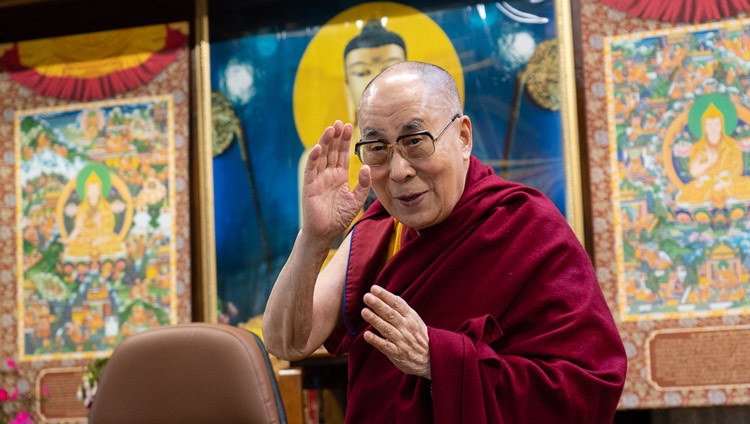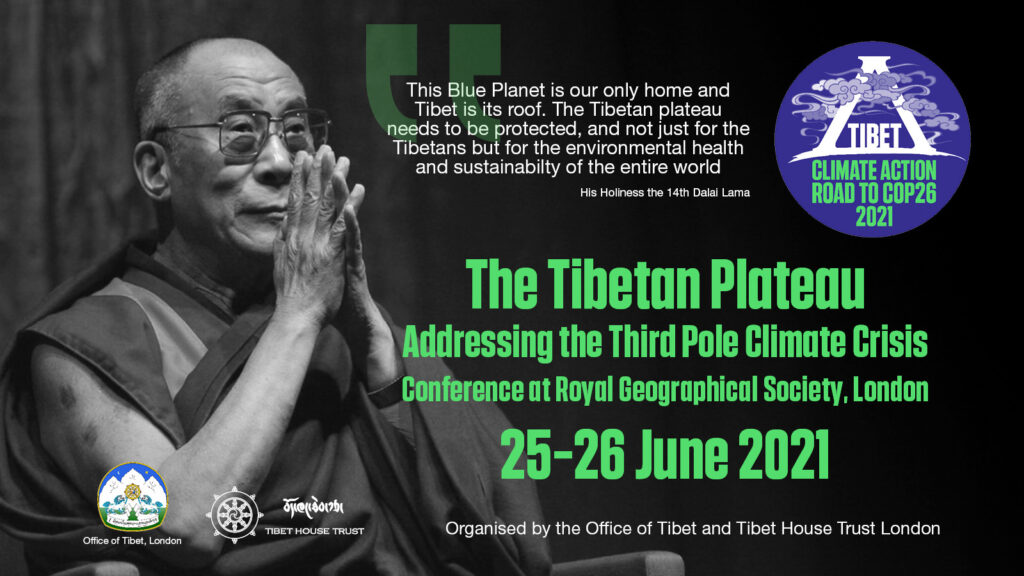Beijing is bent on deciding succession of Tibet’s next Dalai Lama
Brooke Schedneck, writing in Asia Times said that Tibet’s Buddhists said that they will find the next reincarnation of Tenzin Gyatso but Beijing is bent on deciding the succession.
Dalai Lama is an important figure bringing Buddhist teachings to the international community. The successor to the Dalai Lama is traditionally identified by senior monastic disciples, based on spiritual signs and visions.
In 2011, however, the Chinese Foreign Ministry declared that only the government in Beijing can appoint the next Dalai Lama, and no recognition should be given to any other candidate, reported Asia Times.
The Dalai Lama is a highly influential figure, and choosing a successor is not just a religious issue, but a political one as well, opines Schedneck.
The 14 generations of Dalai Lamas, spanning six centuries, are linked through their acts of compassion and their wish to benefit all living beings.
The current Dalai Lama was enthroned when he was about four years old and was renamed Tenzin Gyatso.
Today the selection process for the next Dalai Lama remains uncertain. In 1950 China’s communist government invaded Tibet, which it insists has always belonged to China.
The Dalai Lama fled in 1959 and set up a government in exile. The Dalai Lama is revered by Tibetan people, who have maintained their devotion over the past 70 years of Chinese rule.
In 1995 the Chinese government detained the Dalai Lama’s choice for the successor of the 10th Panchen Lama, named Gedhun Choekyi Nyima, when he was six years old.
Since then China has refused to give details of his whereabouts. Panchen Lama is the second most important tulku lineage in Tibetan Buddhism, reported Asia Times.
Mahayana Buddhists believe bodhisattvas choose to be reborn, to experience the pain and suffering of the world, to help other beings attain enlightenment.
Tibetan Buddhism has developed this idea of the bodhisattva further into identified lineages of rebirths called “tulkus.”
The Tibetan people revolted when the newly selected 11th Panchen Lama was detained. The Chinese government responded by appointing its own Panchen Lama, the son of a Chinese security officer.
The Panchen Lamas and Dalai Lamas have historically played major roles in recognizing each other’s next incarnations.
China also wants to appoint its own Dalai Lama. But it is important to Tibetan Buddhists that they are in charge of the selection process.
There are usually predictions about where and when a Dalai Lama will be reborn, but further tests and signs are required to ensure the proper child is found.
In the case of the 13th Dalai Lama, after his death, his body lay facing south. However, after a few days his head had tilted to the east and a fungus, viewed as unusual, appeared on the north-eastern side of the shrine, where his body was kept.
This was interpreted to mean that the next Dalai Lama could have been born somewhere in the north-eastern part of Tibet, reported Asia Times.
Disciples also checked Lhamo La-tso, a lake that is traditionally used to see visions of the location of the Dalai Lama’s rebirth.
The district of Dokham, which is in the northeast of Tibet, matched all of these signs. A 2-year-old boy named Lhamo Dhondup was just the right age for a reincarnation of the 13th Dalai Lama, based on the time of his death.
When the search party consisting of the 13th Dalai Lama’s closest monastic attendants arrived at his house, they believed they recognized signs that confirmed that they had reached the right place.
The 14th Dalai Lama recounts in his memoirs about his early life that he remembered recognizing one of the monks in the search party, even though he was dressed as a servant. To prevent any manipulation of the process, members of the search party had not shown villagers who they were, reported Asia Times.
The Dalai Lama remembered as a little boy asking for the rosary beads that monk had worn around his neck. These beads were previously owned by the 13th Dalai Lama. After this meeting, the search party came back again to test the young boy with further objects of the previous Dalai Lama.
He was able to correctly choose all items, including a drum used for rituals and a walking stick.
Because of the threat from China, the 14th Dalai Lama has made a number of statements that would make it difficult for a Chinese-appointed 15th Dalai Lama to be seen as legitimate, said Schedneck.
For example, he has stated that the institution of the Dalai Lama might not be needed anymore. However, he has also said it is up to the people if they want to preserve this aspect of Tibetan Buddhism and continue the Dalai Lama lineage. The Dalai Lama has indicated that he will decide, on turning 90 in four years’ time, whether he will be reborn.
Another option the Dalai Lama has proposed is announcing his next reincarnation before he dies. In this scenario, the Dalai Lama would transfer his spiritual realization to the successor.
A third alternative Tenzin Gyatso has articulated is that if he dies outside of Tibet, and the Panchen Lama remains missing, his reincarnation would be located abroad, most likely in India. Experts believe the Chinese government’s search, however, would take place in Tibet, led by the Chinese-appointed Panchen Lama, said Schedneck.
The Dalai Lama is confident that no one would trust the Chinese government’s choice. The Tibetan people, as he has said, would never accept a Chinese-appointed Dalai Lama, reported Asia Times.
This story has been published from a wire agency feed without modifications to the text.




 The topic for discussion on the first day of the conference is “global importance of the Tibetan Plateau and possible impacts of Climate Change in Tibet”.
The topic for discussion on the first day of the conference is “global importance of the Tibetan Plateau and possible impacts of Climate Change in Tibet”. The second day of the conference will focus on ‘Trans-boundary Rivers and the state of Rivers originating from the Tibetan Plateau’ with experts including; Prof. Brahma Chellaney (Professor of Strategic Studies at the Centre for Policy Research in India), Dr. Lobsang Yangtso (Research and Campaign Assistant to Tibet Third Pole of International Tibet Network), Dr. Brian Eyler (a Senior Fellow and Director of Stimson’s Southeast Asia Program in USA), Mrs. Dechen Palmo, Research Fellow at the Tibet Policy Institute in India, and Gidon Bromberg, an International Lawyer and Israeli Director of EcoPeace Middle East.
The second day of the conference will focus on ‘Trans-boundary Rivers and the state of Rivers originating from the Tibetan Plateau’ with experts including; Prof. Brahma Chellaney (Professor of Strategic Studies at the Centre for Policy Research in India), Dr. Lobsang Yangtso (Research and Campaign Assistant to Tibet Third Pole of International Tibet Network), Dr. Brian Eyler (a Senior Fellow and Director of Stimson’s Southeast Asia Program in USA), Mrs. Dechen Palmo, Research Fellow at the Tibet Policy Institute in India, and Gidon Bromberg, an International Lawyer and Israeli Director of EcoPeace Middle East. The “role of human rights in environmental conservation” will be discussed by Yves Lador (a Consultant and an NGO Representative to the UN in
The “role of human rights in environmental conservation” will be discussed by Yves Lador (a Consultant and an NGO Representative to the UN in 

 By — Staff Reporter
By — Staff Reporter